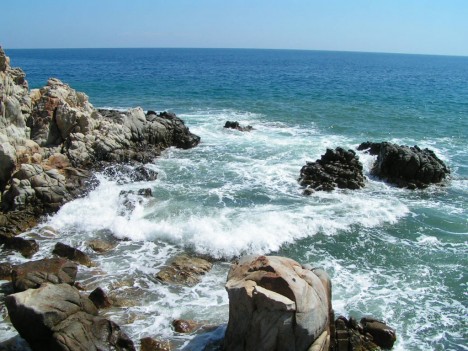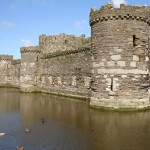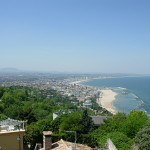History Alive: Discovering Great Historical Sites in the Mediterranean
Located between Europe, northern Africa and southwestern Asia, the Mediterranean Sea borders 21 different nations on three continents. A holiday in the area, really does provide something for everyone, whether you’re seeking a lazy beach break, or want to explore the fascinating history of countries including Spain, France, Italy, Greece, Israel and Egypt. The wealth of historical sites, including many UNESCO World Heritage Sites, is enough to keep the most ardent history buff busy for many vacations to come, and just some of the must-see sites include:

Mediterranean Sea / Photo by admin
Spain
Since its days as a Roman outpost, Spain was a Moorish settlement before evolving into the contemporary European country it is today. Its historic sites celebrate the full breadth of its heritage, but none captures its Moorish past more than the breathtaking, Andalucia. On the left bank of the River Darro and occupying a strategic hilltop overlooking the city of Granada, this breathtaking palace and fortress complex was constructed during the mid 14th century by the Berber rulers of the Emirate of Granada. The Moorish architecture, shady courtyards and beautiful gardens, with views of the Sierra Nevada mountains have visitors from around the world flocking there on a daily basis. The areas open to the public are the Alcazaba, the Nasrid Palaces, the Mosque baths and the Generalife gardens. Since entrance is strictly controlled, visitors should purchase tickets in advance, to avoid disappointment. To arrive in Granada and not be able to visit the Alhambra, would be a tragedy.
France
Languedoc Roussillon in southern France has one of the most well preserved Roman aqueducts in existence. The 1st century Pont du Gard is just part of an extensive water system designed to carry water from the River Eure to Nimes, some 30 miles away. The half mile long and 165 feet high tri-level aqueduct was originally constructed without the use of mortar, and its stones are held together with iron clamps. The stones, some of which weigh more than six tons, were hoisted into place by a human-powered treadmill block and tackle winch. The aqueduct was restored during the 18th century, and visitors today can now walk across it.
Italy
Known as the “Eternal city,” no visit to Italy is complete without a visit to Rome, which abounds with historical sites, Roman architecture and masterpieces of art, spanning the different historical layers which have built this amazing city through the centuries, from the remains of the Roman empire, through the Medieval and Renaissance periods to the modern day site of 21st century architectural statements. The city’s quintessential spectacle has to be the, commissioned by Vespasian in 72 A.D. and inaugurated by Titus in 80 A.D. Elliptical in shape, its 76 entrances allowed 50,000 spectators to enter and watch gladiatorial battles. Built from brick and concrete, and faced with travertine and marble, the amphitheatre boasts three levels of arcades in Doric, Ionic and Corinthian styles. The Coliseum deteriorated into little more than ruins, until 1750 when it was saved by Pope Benedict XIV, who declared “this is a holy place, where Christian martyrs’ blood was shed..”
Greece
Athens may be a modern day nightmare when it comes to traffic and getting around, but this should not deter visitors from seeking out the Acropolis, atop of which sits the Parthenon, commonly known as the Temple of Athena. Constructed between 447-432 BCE, the Doric temple was dedicated to the goddess Athena, also known as Parthenos (virgin) and housed a monumental statue of her which was made from gold and ivory by Pheidias. Mathematicians will be interested to learn that with eight columns at the front and seventeen columns at the flank, the temple conforms to the ratio of 9:4, which its builders used to govern the vertical and horizontal proportions of not only the temple structure, but many other proportions within it, such as the height of the columns and the space between them.
Israel
History and archaeology lovers, as well as pilgrims from around the world have plenty of sites to visit in Israel. One of the most visited is the fortress of Massada, built in 30 BCE by King Herod. It sits on top of a steep mountain overlooking the desert to the west and the Dead Sea and Jordan to the east. At the start of the revolt against Rome in 68 BCE, Massada was conquered by a group of Jewish zealots and was to become their final stronghold, before the Romans besieged the fortress, having constructed an earthen rampart on the western side of the mountain. Built on three rock terraces, the most impressive structures still standing are Herod’s northern palace, a large bath house with a mosaic floor and walls decorated with murals.
Egypt
The oldest and only of the Seven Wonders of the Ancient World to remain largely intact, the Great Pyramid of Giza is the largest of the three pyramids in the Giza Necropolis. Built as a tomb for fourth dynasty Egyptian Pharaoh Khufu, over a 20-year period from around 2540 BCE, the pyramid, which originally stood 480 feet tall, and comprises more than 2.3 million stone blocks weighing two and a half tons each, remains an amazing feat of construction that still has engineers, archeologists and scholars in awe of its magnitude. Erosion has reduced the pyramid by around 30 feet in height, but it remained the tallest man-made structure for 3,800 years.
Hannah writes for medwelcome.
Category: Greece, Sea sites, Sea sites, Sea sites, Travel Tips














